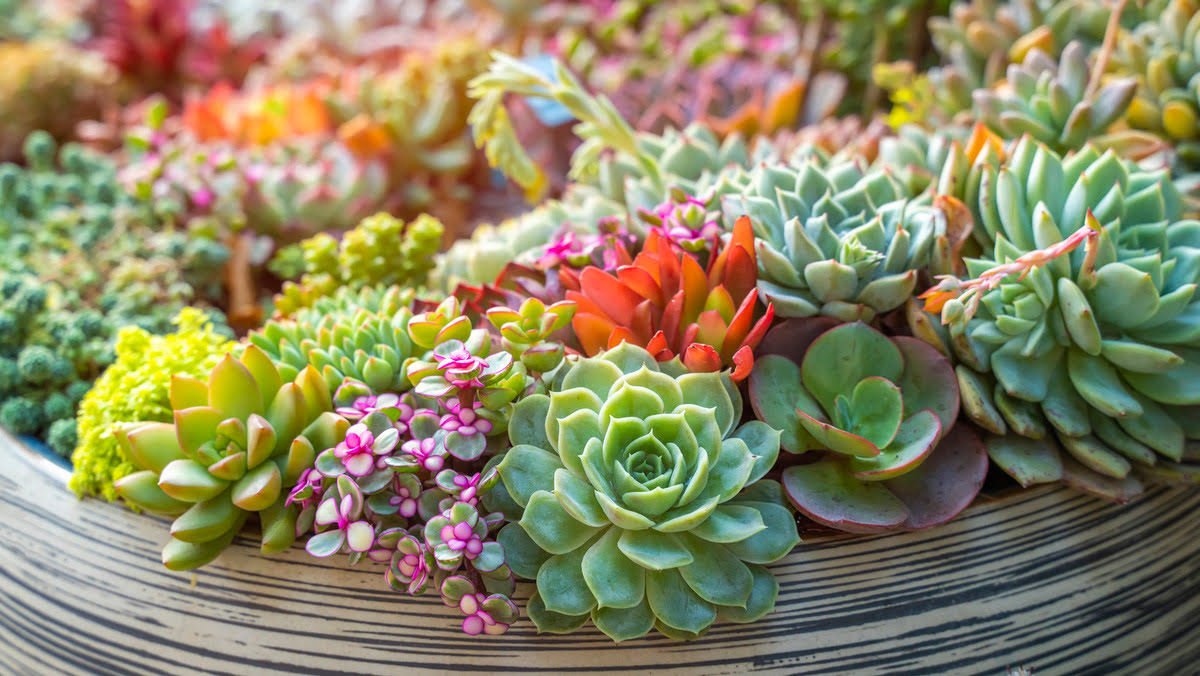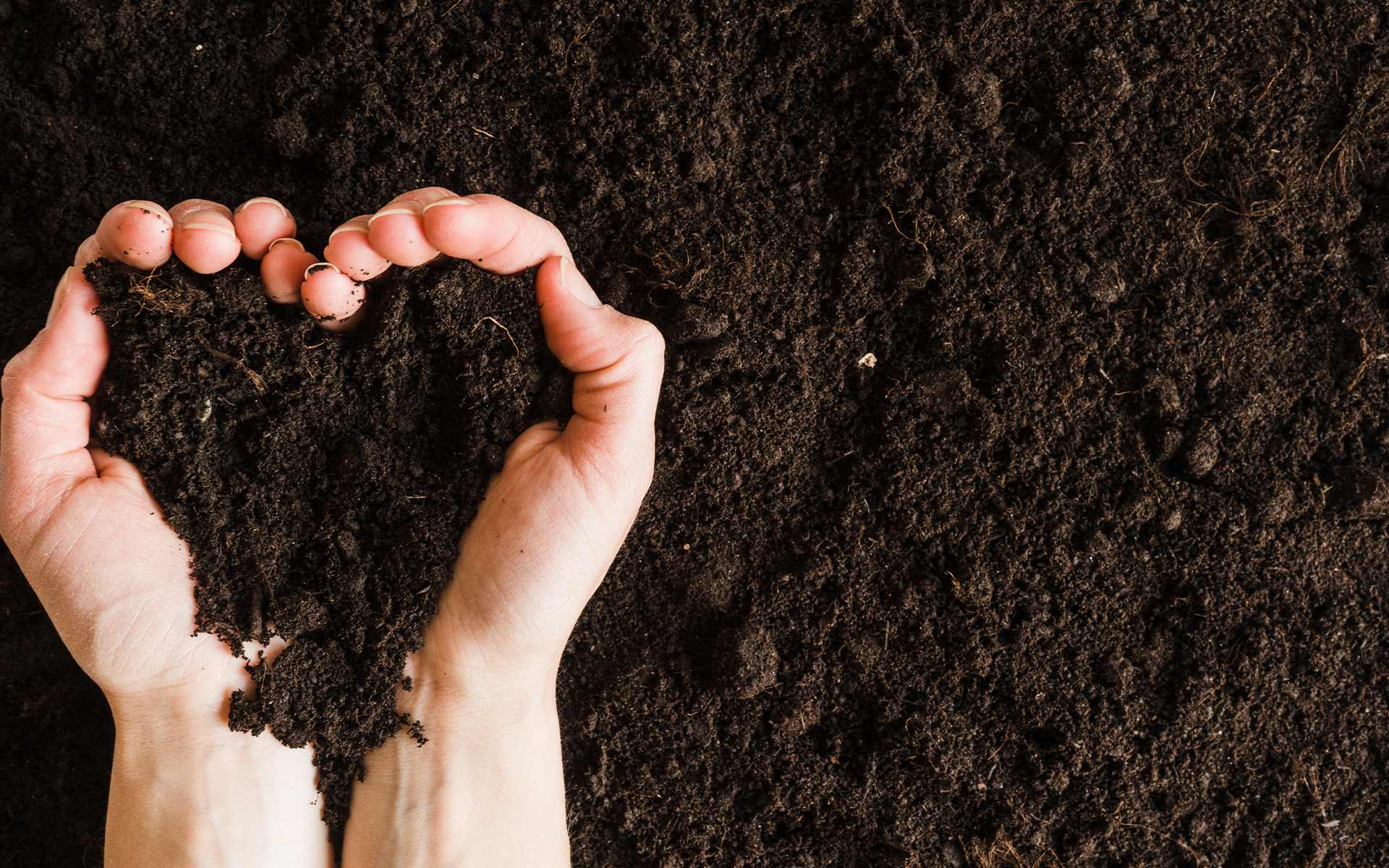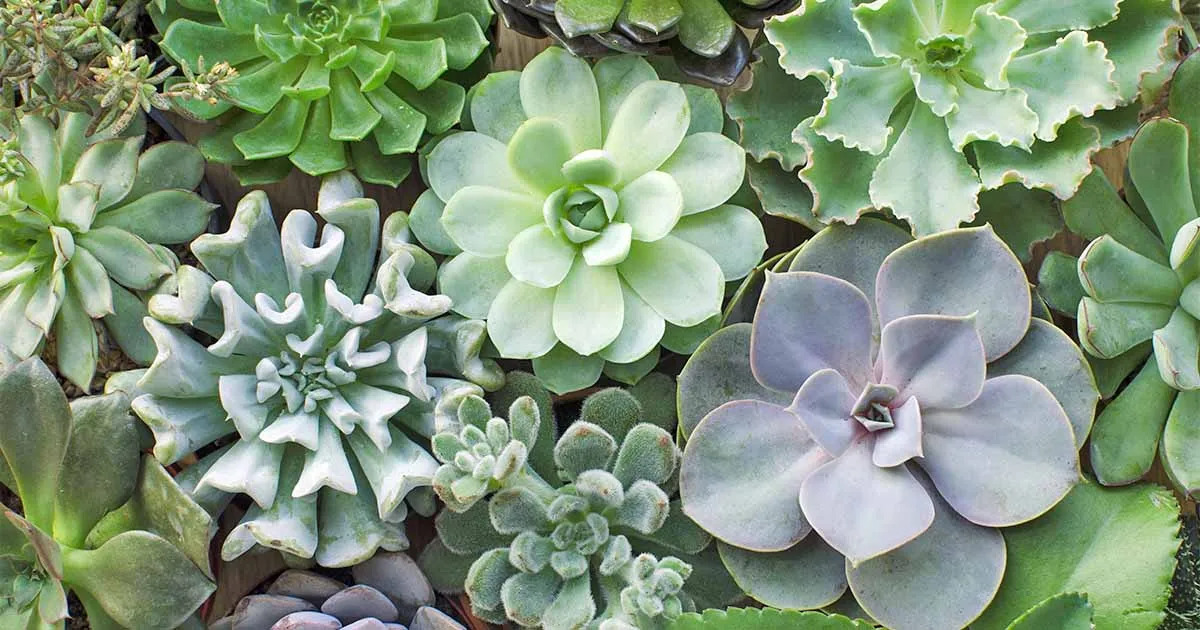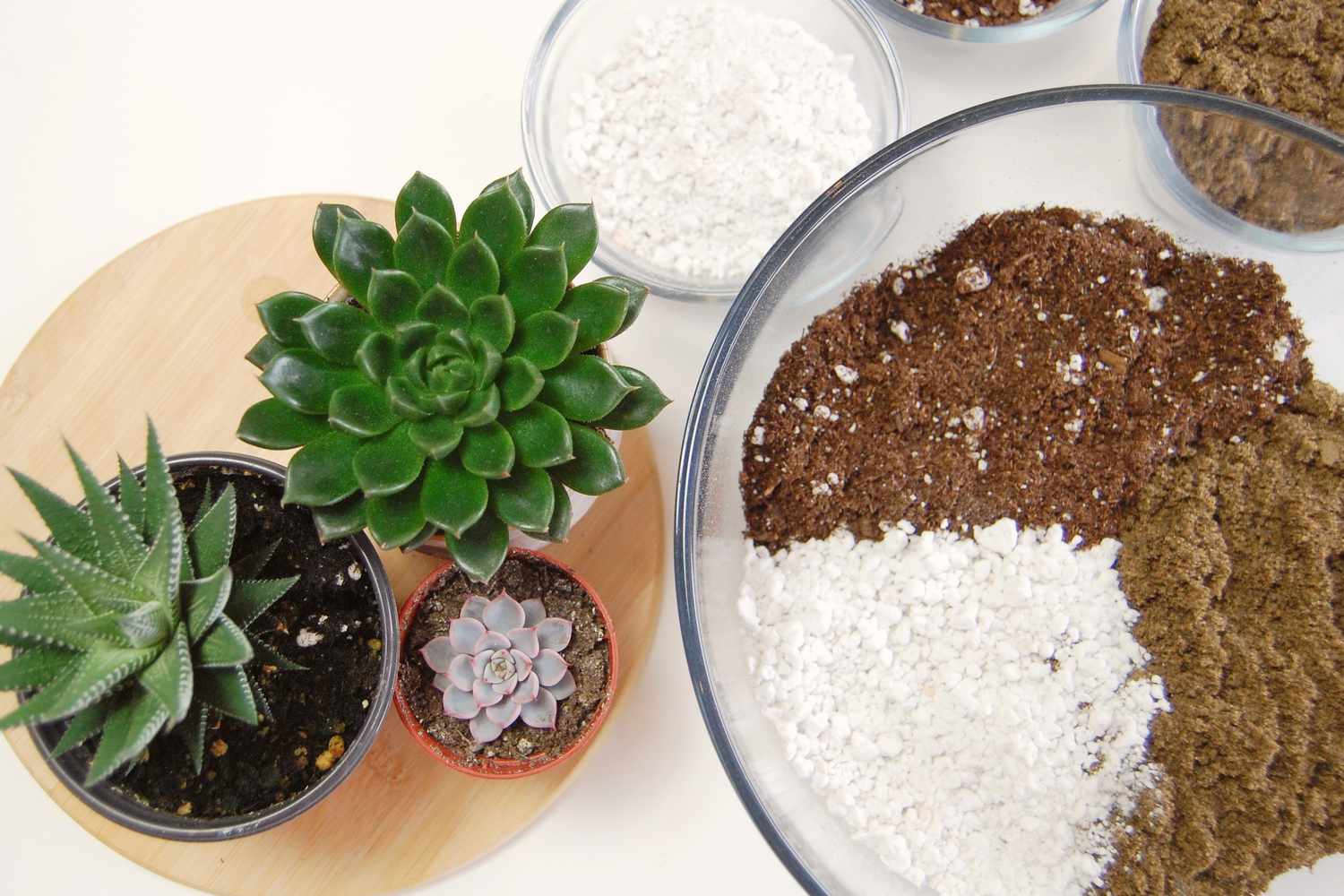Home>Gardening Basics>Understanding Soil>How To Make Succulent Soil


Understanding Soil
How To Make Succulent Soil
Modified: February 9, 2024
Learn the secrets of creating the perfect succulent soil in our comprehensive guide. Understand soil composition and choose the best ingredients for thriving succulents.
(Many of the links in this article redirect to a specific reviewed product. Your purchase of these products through affiliate links helps to generate commission for Chicagolandgardening.com, at no extra cost. Learn more)
Table of Contents
Introduction
Welcome to the world of succulents, where these unique and beautiful plants thrive in arid and drought-prone environments. As an avid succulent enthusiast, you understand the importance of providing your plants with the ideal growing medium. The key to successful succulent cultivation lies in having the right soil composition.
Succulent soil differs from traditional garden soil. It is specially formulated to provide the perfect balance of moisture retention and drainage that succulents need to flourish. Whether you’re a seasoned gardener or a beginner in the world of succulents, this comprehensive guide will equip you with the knowledge and techniques needed to create an ideal succulent soil.
Understanding the specific needs of succulents is crucial. These plants have adapted to survive in regions with limited water resources, and their roots require a unique soil composition that promotes both water absorption and rapid drainage. Creating the optimal succulent soil will not only ensure the health and longevity of your plants but also prevent issues such as root rot and overwatering.
In the following sections, we will discuss the essential ingredients for succulent soil, provide a simple and effective recipe, guide you through the process of mixing and preparing the soil, offer tips for testing and adjusting the soil’s pH, and share advice on storing and using your succulent soil. By following these guidelines, you’ll be well on your way to cultivating beautiful and thriving succulents.
Understanding Succulent Soil
Before we dive into the specifics of creating succulent soil, it’s important to understand why it’s different from regular garden soil. Succulents, such as cacti and aloe vera, are desert plants that have adapted to survive in arid conditions. Their leaves, stems, and roots are designed to store water, allowing them to thrive in environments with minimal rainfall.
Because of their unique characteristics, succulents require a soil mix that is well-draining. This means that the soil should not retain water for extended periods but should allow excess moisture to drain away quickly. When succulent roots are constantly wet, particularly during cooler seasons, they become susceptible to rot and fungal infections.
Succulent soil should be loose, airy, and have excellent drainage capabilities. It is typically a combination of organic matter, inorganic materials, and coarse sand or pumice. These components work together to create a well-balanced environment for the roots of succulents.
The organic matter in succulent soil provides essential nutrients to the plants. It can be in the form of compost, peat moss, or coconut coir. The inorganic materials, such as perlite or vermiculite, help improve drainage by preventing the soil particles from compacting too tightly. Coarse sand or pumice adds grittiness to the soil, further aiding in drainage.
By understanding the unique requirements of succulent soil, you can ensure that your plants receive the proper care they need. While it may be tempting to use regular potting soil for your succulents, it will not provide the right conditions for their growth and can lead to root rot and other issues.
In the next sections, we will discuss the different ingredients used in succulent soil, provide a step-by-step recipe for creating your own succulent soil mix, and share some tips for testing and adjusting the pH of the soil to optimize plant growth.
Choosing the Right Ingredients
When it comes to creating succulent soil, choosing the right ingredients is crucial. Each component plays a specific role in providing the ideal environment for your succulents to thrive. Here are some essential ingredients to consider:
- Organic Matter: Look for organic materials that will provide nutrients to the plants. Compost, coco coir, or peat moss are commonly used options. These materials help retain moisture while promoting root growth and overall plant health.
- Inorganic Materials: Adding inorganic materials like perlite, vermiculite, or pumice helps increase drainage and prevent soil compaction. These lightweight materials improve aeration and create spaces between soil particles, allowing excess water to flow freely.
- Coarse Sand: Coarse sand, such as horticultural sand, is an excellent addition to succulent soil. It improves drainage and prevents soil from becoming waterlogged. Be sure to opt for coarse sand rather than fine sand, as fine sand can lead to compacted soil.
The ratio of these ingredients will depend on your specific succulent species and climate conditions. A typical recipe for succulent soil includes equal parts organic matter, inorganic material, and coarse sand. However, you can adjust the ratios based on the unique needs of your plants.
It’s important to choose high-quality ingredients from reputable suppliers. Avoid using garden soil or regular potting soil, as they tend to retain too much moisture and lack proper drainage.
Furthermore, consider the pH levels of the ingredients you choose. Succulents typically prefer slightly acidic to neutral soil, so ensure that the components you select do not have overly alkaline properties. Testing the pH of your soil mix can help ensure that it falls within the optimal range for your succulents to flourish.
Now that you understand the importance of choosing the right ingredients, let’s move on to the recipe for creating your own succulent soil mix in the next section.
Recipe for Succulent Soil
Creating the perfect succulent soil mix is a straightforward process that involves combining the right ingredients in the correct proportions. Here’s a simple recipe to get you started:
- Ingredients:
- Equal parts organic matter (compost, coco coir, or peat moss)
- Equal parts inorganic material (perlite, vermiculite, or pumice)
- Equal parts coarse sand (horticultural sand)
- Instructions:
- Start by gathering your ingredients. Make sure they are high-quality and free from any chemicals or contaminants.
- In a large container or bucket, combine the organic matter, inorganic material, and coarse sand. Use equal parts of each ingredient.
- Thoroughly mix the ingredients together until well combined. Make sure there are no clumps or pockets of one ingredient.
- Your succulent soil mix is now ready to use. Transfer it to a clean, dry container or store it in a sealed bag for future use.
Remember, the proportions of the ingredients can be adjusted based on your specific succulent species and climate conditions. Some succulents may prefer a slightly different mix, so don’t be afraid to experiment until you find the perfect balance.
By creating your own succulent soil mix, you have control over the quality and composition of the soil. This allows you to provide the ideal growing conditions for your succulents and ensures their long-term health and vitality.
Next, we will discuss the process of mixing and preparing the soil to ensure that the ingredients are well-incorporated and ready to nourish your succulents.
Mixing and Preparing the Soil
Once you have gathered your ingredients and measured them according to the succulent soil recipe, it’s time to mix and prepare the soil. Properly combining and preparing the soil will ensure that all the ingredients are evenly distributed, creating a well-balanced growing medium for your succulents.
Here are the steps to follow:
- Gather your materials: You will need a large container or bucket, gardening gloves, and a gardening trowel.
- Add the organic matter: Start by pouring the equal parts of organic matter, such as compost or peat moss, into the container. Spread it evenly across the bottom.
- Incorporate the inorganic material: Add the equal parts of inorganic material, such as perlite or vermiculite, on top of the organic matter. Use your gardening trowel to mix the two together, ensuring even distribution.
- Blend in the coarse sand: Lastly, add the equal parts of coarse sand, such as horticultural sand, to the mix. Use the gardening trowel to thoroughly combine all the ingredients until they are evenly distributed.
- Check for proper consistency: The ideal succulent soil should be crumbly and well-draining. It should hold its shape when squeezed but easily break apart. If the mix feels too dense, you can add a bit more inorganic material or coarse sand to improve the texture.
As you mix the ingredients, you may notice that the texture and consistency of the soil may vary depending on the specific ingredients used. This is normal, and as long as the soil meets the desired characteristics of good drainage and moisture retention, it will provide a suitable environment for your succulents.
Once the soil is thoroughly mixed and well-combined, it is ready to be used in planting or repotting your succulents. Remember to take proper care of your succulents by providing adequate sunlight, water sparingly, and allowing the soil to dry out completely between waterings. This will help prevent overwatering and root rot, ensuring the health and longevity of your plants.
In the next section, we will discuss how to test the pH of your succulent soil and how to adjust it if necessary to create an optimal growing environment for your plants.
Testing the pH of Succulent Soil
The pH level of succulent soil plays a crucial role in the overall health and growth of your plants. Succulents typically thrive in slightly acidic to neutral soil conditions. Testing the pH of your succulent soil will help you determine if it falls within the optimal range and allows you to make any necessary adjustments.
There are a few methods you can use to test the pH of your succulent soil:
- Using a pH Testing Kit: pH testing kits are widely available at garden centers or online. Follow the instructions provided with the kit to measure the pH level of your soil. It usually involves taking a soil sample, adding a testing solution, and comparing the color change to a color chart to determine the pH.
- Testing Strips: pH testing strips are another convenient option. Simply insert the strip into a soil sample and compare the color change to the chart provided on the kit. These strips give a quick and easy estimation of the soil’s pH level.
- Electronic pH Meter: For more precise measurements, you can invest in an electronic pH meter. These devices provide a digital readout of the pH level. Follow the manufacturer’s instructions to insert the probe into the soil and obtain an accurate reading. Remember to calibrate the meter as instructed to ensure accurate results.
Once you have tested the pH of your succulent soil, you can determine whether any adjustments are needed to bring it within the optimal range. Succulents generally prefer a pH range between 5.5 and 7.0, slightly acidic to neutral.
In the next section, we will discuss how to adjust the pH of your succulent soil if necessary to create the best growing conditions for your plants.
Adjusting the pH if Necessary
After testing the pH of your succulent soil, you may find that it is outside of the optimal range for your plants. If the pH level is too high (alkaline), you can make adjustments to bring it within the desired range. Here are a few methods for adjusting the pH if necessary:
- Adding Organic Matter: If the soil pH is too high, incorporating acidic organic materials can help lower the pH. For example, adding elemental sulfur, pine needles, or coffee grounds to the soil mix can gradually make it more acidic over time.
- Using Acidifying Agents: Acidifying agents such as vinegar or citric acid can be diluted and added to the water used for watering your succulents. This approach can help lower the pH of the water, which in turn affects the pH of the soil over time.
- Consider pH-Adjusting Fertilizers: Some fertilizers are formulated to specifically lower or raise the pH of the soil. Look for products labeled as pH-adjusting fertilizers and follow the instructions provided to achieve the desired pH levels.
It’s important to note that adjusting the pH of your succulent soil should be done gradually and in small increments. Sudden and dramatic changes in pH can stress the plants and negatively impact their health. Monitor the pH levels over time and make adjustments as needed, giving your succulents time to adjust to the new pH conditions.
Remember to always follow the instructions provided with the products you use for pH adjustment and exercise caution to avoid overdoing it. Regularly testing the pH of your soil will allow you to keep track of any changes and make necessary adjustments to provide the best growing conditions for your succulents.
In the next section, we will discuss how to store and use your succulent soil to ensure its longevity and effectiveness.
Storing and Using Succulent Soil
Proper storage and usage of succulent soil are essential for maintaining its quality and effectiveness over time. Here are some tips to help you store and effectively use your succulent soil:
- Container Selection: Choose a clean, dry container or resealable bag for storing your succulent soil. Make sure the container is airtight and provides protection against moisture and pests.
- Labeling: Clearly label the container with the date of preparation and the ingredients used. This will help you keep track of the soil’s age and composition.
- Storage Location: Store the succulent soil in a cool, dry place away from direct sunlight. Exposure to extreme temperatures and excessive moisture can degrade the quality of the soil.
- Moisture Control: Check the moisture level of the stored soil periodically. It should remain dry to prevent the growth of mold or fungi. If you notice any signs of moisture, spread the soil out in a thin layer and allow it to dry before storing it again.
- Using Fresh Soil: When planting or repotting succulents, it is advisable to use fresh succulent soil to provide the best growing conditions. Over time, stored soil may lose some of its nutrients and drainage properties.
- Amending the Soil: If you are reusing stored soil, consider amending it with fresh organic matter, inorganic materials, or coarse sand to rejuvenate its properties for optimal plant growth.
- Well-Draining Containers: When using succulent soil, ensure that your containers have drainage holes to allow excess water to escape. Proper drainage is crucial to prevent waterlogged soil and root rot.
- Layering Technique: If transplanting succulents, consider layering the bottom of the container with gravel or small stones to improve drainage. This will further enhance the effectiveness of your succulent soil.
By following these guidelines for storing and using your succulent soil, you can maintain its quality and ensure the best possible growing conditions for your plants. Remember to adjust watering frequency based on the characteristics of your soil mix and the specific needs of your succulents.
In the final section, we will provide some additional tips for successful succulent soil and share some concluding thoughts on the importance of creating the right soil for your beloved succulents.
Tips for Successful Succulent Soil
Creating and maintaining successful succulent soil is essential for the health and growth of your plants. Here are some additional tips to ensure the success of your succulent soil:
- Avoid Overwatering: Succulents are adapted to dry conditions and can withstand periods of drought. Water sparingly and allow the soil to dry out completely between waterings to prevent root rot.
- Use Well-Draining Pots: Potting your succulents in containers with drainage holes ensures that excess water can escape, preventing waterlogged soil.
- Provide Adequate Sunlight: Succulents love bright sunlight. Place them in a sunny location, preferably with at least 6 hours of direct sunlight per day.
- Monitor for Pests: Keep an eye out for common succulent pests like mealybugs and spider mites. Regularly inspect your plants and take appropriate pest control measures if necessary.
- Implement a Regular Feeding Schedule: Although succulents do not require frequent fertilization, providing a diluted, balanced fertilizer during the growing season can help promote healthy growth.
- Rotate Plants to Ensure Even Growth: Rotate your succulents periodically to ensure that all sides of the plant receive equal exposure to sunlight, promoting balanced and symmetrical growth.
- Observe and Adjust Care Routine: Pay attention to the specific needs of your succulent species. Some may require more or less water, while others may thrive in slightly different soil compositions.
- Monitor Plant Health: Regularly inspect your succulents for signs of stress, such as wilting, discoloration, or pest infestations. Address any issues promptly to prevent further damage.
- Experiment and Learn: Every succulent enthusiast’s journey is unique. Do not be afraid to experiment with different soil compositions and techniques to find what works best for your plants and growing environment.
By following these tips, you can ensure that your succulent soil provides the ideal conditions necessary for your plants to thrive. Remember that successful succulent cultivation requires a combination of proper soil, adequate sunlight, controlled watering, and regular care.
With the knowledge and techniques shared in this guide, you are well-equipped to create and maintain the ideal succulent soil for your beloved plants. Enjoy the beauty and resilience of succulents and watch them flourish in their specially crafted soil mix.
Conclusion
Creating the right soil for your succulents is an essential step in ensuring their health and vitality. Succulent soil, with its well-balanced moisture retention and excellent drainage capabilities, provides the ideal growing medium for these unique and resilient plants.
Throughout this guide, we’ve explored the importance of understanding succulent soil and choosing the right ingredients. We’ve discussed the recipe for making your own succulent soil mix, as well as the steps involved in mixing and preparing the soil.
We’ve also emphasized the significance of testing and adjusting the pH of your succulent soil to create the optimal conditions for succulent growth. Learning how to store and use your succulent soil properly is crucial, as it ensures the longevity and effectiveness of the soil mix.
In addition, we’ve provided valuable tips for successful succulent soil, including advice on watering, providing adequate sunlight, monitoring for pests, and adjusting the care routine based on the specific needs of your plants.
By implementing these guidelines and following best practices, you can give your succulents the best possible growing environment. Their unique characteristics, elegant forms, and striking colors will flourish within the well-drained, nutrient-rich succulent soil you have created.
Remember, cultivating succulents is a journey of discovery and learning. Each plant is unique, and it may take time and experimentation to find the perfect soil mix and care routine for your specific succulent species.
So, roll up your sleeves, gather your ingredients, and embark on the adventure of creating succulent soil. Along the way, you’ll develop a deeper appreciation for these remarkable plants and the intricacies of their growth.
Enjoy the process, cherish your thriving succulents, and embrace the beauty and tranquility they bring to your space. Happy gardening!




